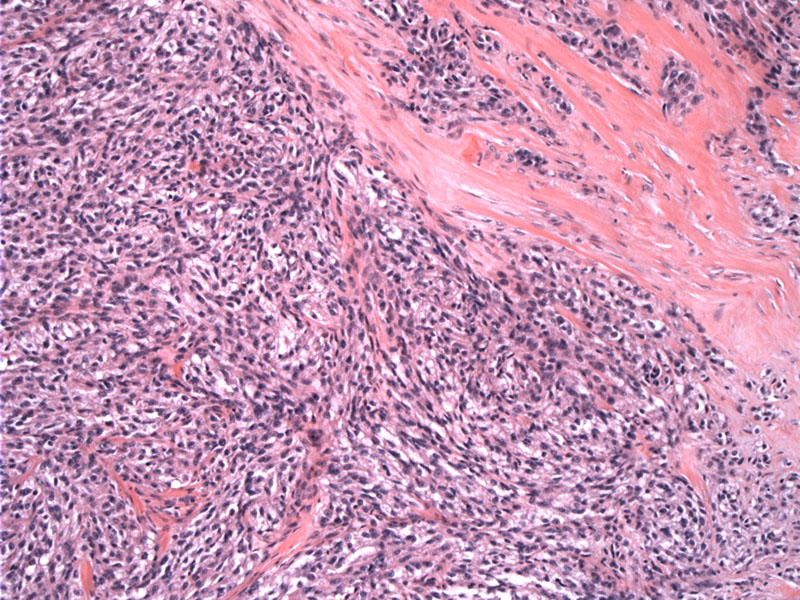

Sheets of tumor cells are separated by thick fibrous bands
The neoplastic cells have round nuclei with prominent nucleoli. The cytoplasm is clear to lightly eosinophilic.
Other (older) terms for clear cell sarcoma of soft parts include "melanoma of soft parts" or "melanoma of tendons and aponeuroses". These tumors tend to arise from tendons and aponeuroses and share some similarity with melanoma (e.g occasional pigmentation and presence of melanosomes within the cell). This tumor expresses melanocytic markers (e.g. S-100, HMB45, MelanA).
Over 90% of clear cell sarcomas harbor the reciprocal chromosomal translocation t(12;22)(q13;q12). This rearrangement joins the EWSR1 and ATF1 genes and leads to expression of EWSR1/ATF1 fusion gene. This translocation is not seen in melanomas.
Histologically, neoplastic spindled to epithelioid cells infiltrate into dense fibroconnective tissue. The tumor is usually divided by thick fibrous bands. The nuclei are vesicular with prominent nucleoli. The cytoplasm is clear or lightly eosinophilic. Melanin pigment is present in half the cases. Touton-type multinucleated giant cells may be present (Folpe).
Affects mainly mainly younger adults (between 20 and 40 years of age). It is the most common sarcoma of the foot and ankle (account for 50% cases). Other locations include knee, thigh, hand, neck and trunk (Folpe).
• Melanocytic : Melanoma, Nodular Type
• Uncertain Lineage : Synovial Sarcoma
• Neural : Malignant Peripheral Nerve Sheath Tumor
Folpe AL, Inwards CY. Bone and Soft Tissue Pathology: Foundations in Diagnostic Pathology Philadelphia, PA: Elsevier; 2010: 231-3.
